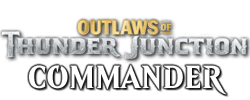Do you use the color requirements?
Original Star would have decks of W, U, B, R, G (sitting in WUBRG order, as per card backs) and also had a "no-artifacts" (but this is the days of Revised/Ice Age - though the article did say use what rules your playgroups agree to use) but most I have played Star with since then just agree on how to handle artifacts/colorless. Also, many Star Commander players extend the theme to one of the following (per game):
WU, UB, BR, RG, GW
WB, UR, BG, RW, GU
WUB, UBR, BRG, RGW, GWU
WBR, URG, BGW, RWU, GUB
CubJay wrote: ↑4 years ago
(note: your allies are not teammates like in two headed giant - they can't block for you or anything like that, they're just opponents who don't need you to lose).
In original Star, this is not the case. There was a rule called "Blocking en-passant" (from the Chess term for a pawn capturing en-passant). Example: If I am playing Blue, my allies are W and B. However, for W to attack B he has to "pass" my area. In this case, I would make first blocking choice, anything I did not block (or anything I block with Trample) would then continue on to attack B.
It makes for interesting politics, because while they are both technically my allies, I also don't want them to win before me. So, extending the previous example, If R is already dead, I would be trying to prevent W from killing B before I could kill G.
IIRC, original rules for Star were printed in Duelist issue 3 or 4.

